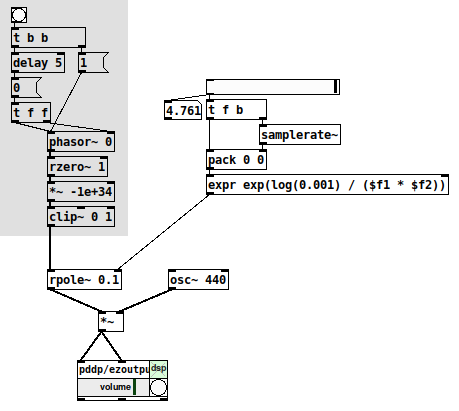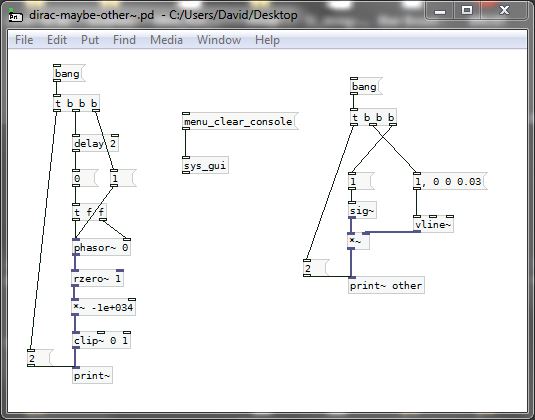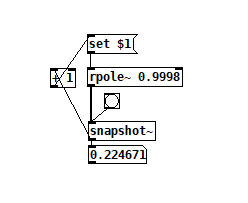Discounting the brief delay, the highlighted bit appears to produce a single Dirac impulse in response to a bang. (The rest is a pd-vanilla version of Decay.ar from SuperCollider.)
Is there a better way?

hjh
Dirac impulse based on control message trigger?
Discounting the brief delay, the highlighted bit appears to produce a single Dirac impulse in response to a bang. (The rest is a pd-vanilla version of Decay.ar from SuperCollider.)
Is there a better way?

hjh
@ddw_music Yes it does, but as you say...... with the delay. The closest I could get to immediate is the second block using a delay of 2.
But [vline~] can future schedule across block boundaries so using it with [sig~] is simpler.... and will give you the first sample of the first block.
dirac-maybe-other~.pd
[zexy/dirac~] will also do that........ and the impulse can also be placed at any position within any block (in a simpler manner to program than with [vline~].... ).
David.

you could just taplay~ an array with one sample at 1
@solipp Yes of course.
I was "thinking?" the array would have to be written and so the first sample would be impossible, but of course it can be prepared.
David.
@solipp said:
you could just taplay~ an array with one sample at 1
Ha, indeed it won't get any simpler than that.
Thanks, all --
hjh
@ddw_music you could also just replace the impulse generator with [set 1(
@jameslo said:
@ddw_music you could also just replace the impulse generator with [set 1(
That's a tempting optimization, but not exactly the same.

The left hand side models the behavior of adding energy into a system -- if the system hasn't decayed to a resting state yet, energy will accumulate. The right hand side simply obliterates the energy that was in the system beforehand. Both are valid behaviors depending on the circumstance, but, not identical.
hjh
@ddw_music good point. Then maybe that same trick could simplify your impulse generator?
 Or you could snapshot the output state to parameterize the obliteration
Or you could snapshot the output state to parameterize the obliteration 

Oops! Looks like something went wrong!